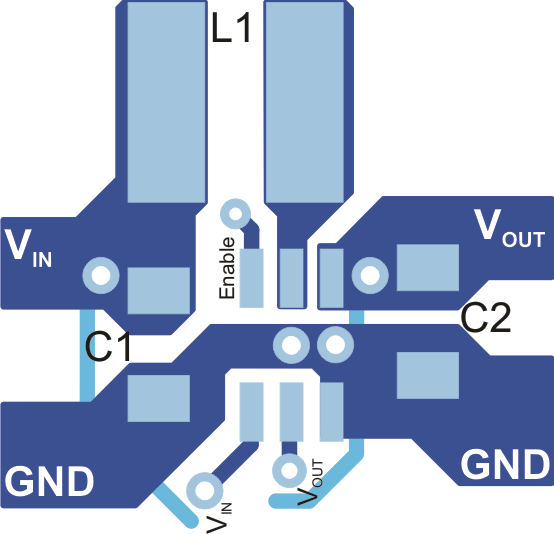ZHCS149A March 2011 – May 2015 TLV61224
PRODUCTION DATA.
10 Layout
10.1 Layout Guidelines
As for all switching power supplies, the layout is an important step in the design, especially at high peak currents and high switching frequencies. If the layout is not carefully done, the regulator could show stability problems as well as EMI problems. Therefore, use wide and short traces for the main current path and for the power ground paths. The input and output capacitor, as well as the inductor should be placed as close as possible to the IC.
To lay out the ground, TI recommends using short traces as well, separated from the power ground traces. This avoids ground shift problems, which can occur due to superimposition of power ground current and control ground current. Assure that the ground traces are connected close to the device GND pin.
10.2 Layout Example
 Figure 12. PCB Layout Suggestion
Figure 12. PCB Layout Suggestion
10.3 Thermal Considerations
Implementation of integrated circuits in low-profile and fine-pitch surface-mount packages typically requires special attention to power dissipation. Many system-dependent issues such as thermal coupling, airflow, added heat sinks and convection surfaces, and the presence of other heat-generating components affect the power-dissipation limits of a given component.
Three basic approaches for enhancing thermal performance are listed below.
- Improving the power-dissipation capability of the PCB design
- Improving the thermal coupling of the component to the PCB
- Introducing airflow in the system
For more details on how to use the thermal parameters in the dissipation ratings table, check the Thermal Characteristics of Linear and Logic Packages Using JEDEC PCB Designs application note (SZZA017) and the Semiconductor and IC Package Thermal Metrics application note (SPRA953).